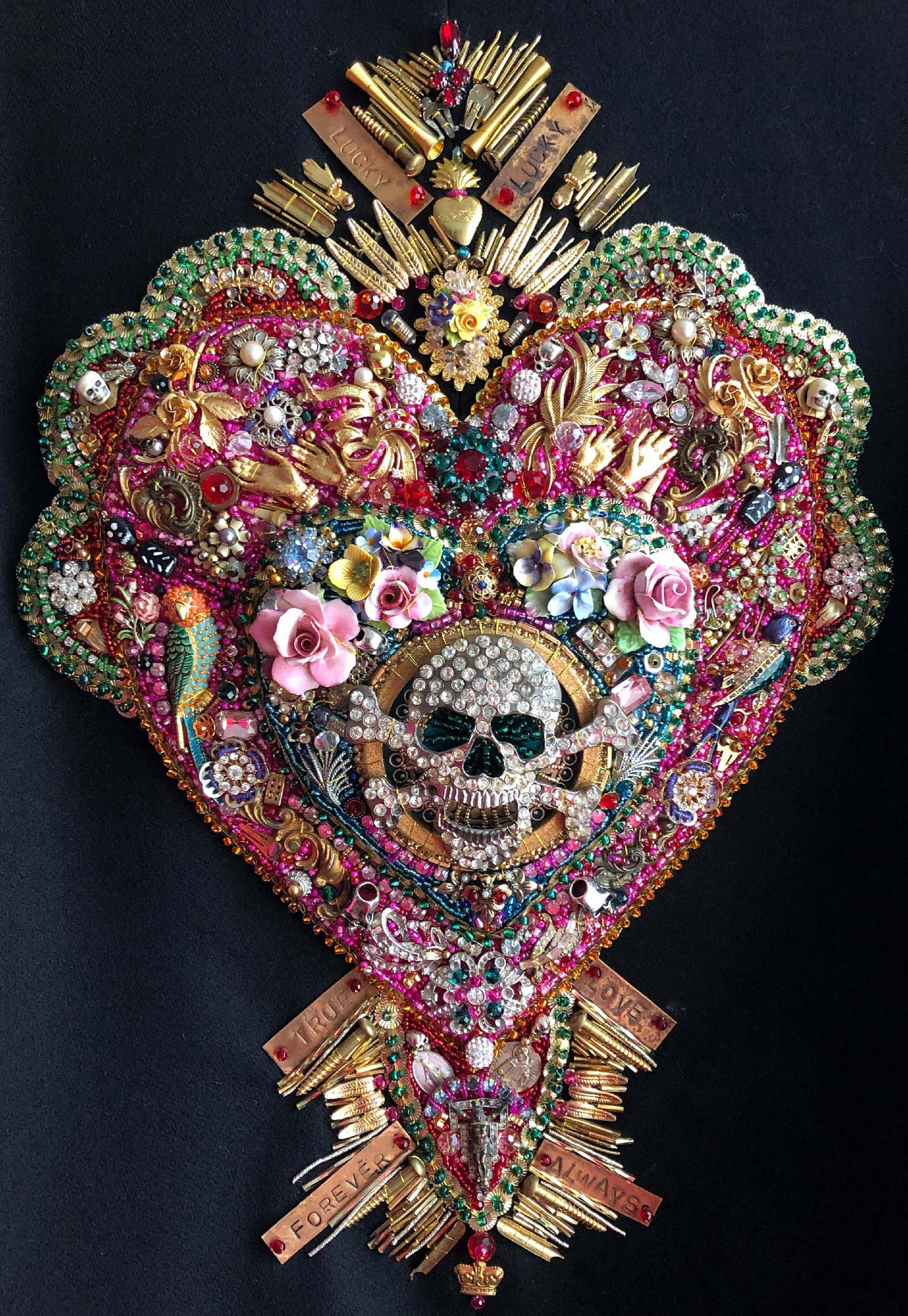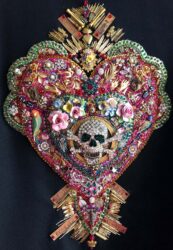Catriona Faulkner is an artist who’s practice probes and scrutinises pain, ritual and devotion at a critical, aesthetic and personal level. Employing assemblage and hand stitch methods to communicate and examine her own life and relationship living with a chronic pain condition and related health issues from an accident in 2000.
The work is an obsessive all consuming approach of collecting, selection and process entangled with symbolic references and metaphors, where shrine akin works emerge from a melting pot of inspiration and experiences. Her visceral approach is her response to an innate need to express creatively from an authentic place and personal perspective. As she says “it needs to come out somehow and my work is how I communicate the subject I know best and fight with everyday, pain“.
Catriona’s work can be deceptively comfortable and appealing as the viewer is immersed and seduced by the opulence and intrigue of the process, however delve into her language of materials and narratives that lurk behind the surface and you are exposed to a personal world and language responding to chronic pain and obsession.
Her practice reflects an ethos of using found objects with intrinsic interest to create, gathering and collecting from life’s forgotten mundane detritus. She then recontextualises this undisguised treasure finding a beauty within and painstakingly breathing life into these inanimate objects. Catriona’s use and selection of materials enables a sense of the familiar and recognisable but is reframed and presented in a new context and configuration, objects take on a different role, a hybrid identity of something familiar but transformed, recoded at the same time through placement, selection and relationship. Embedded throughout the work is an underlying questioning in why and how objects gain value and occupy memory in us all throughout cultures and faiths.
Her language and use of materials are personal, coded, symbolic ,metamorphic and completely her own.


